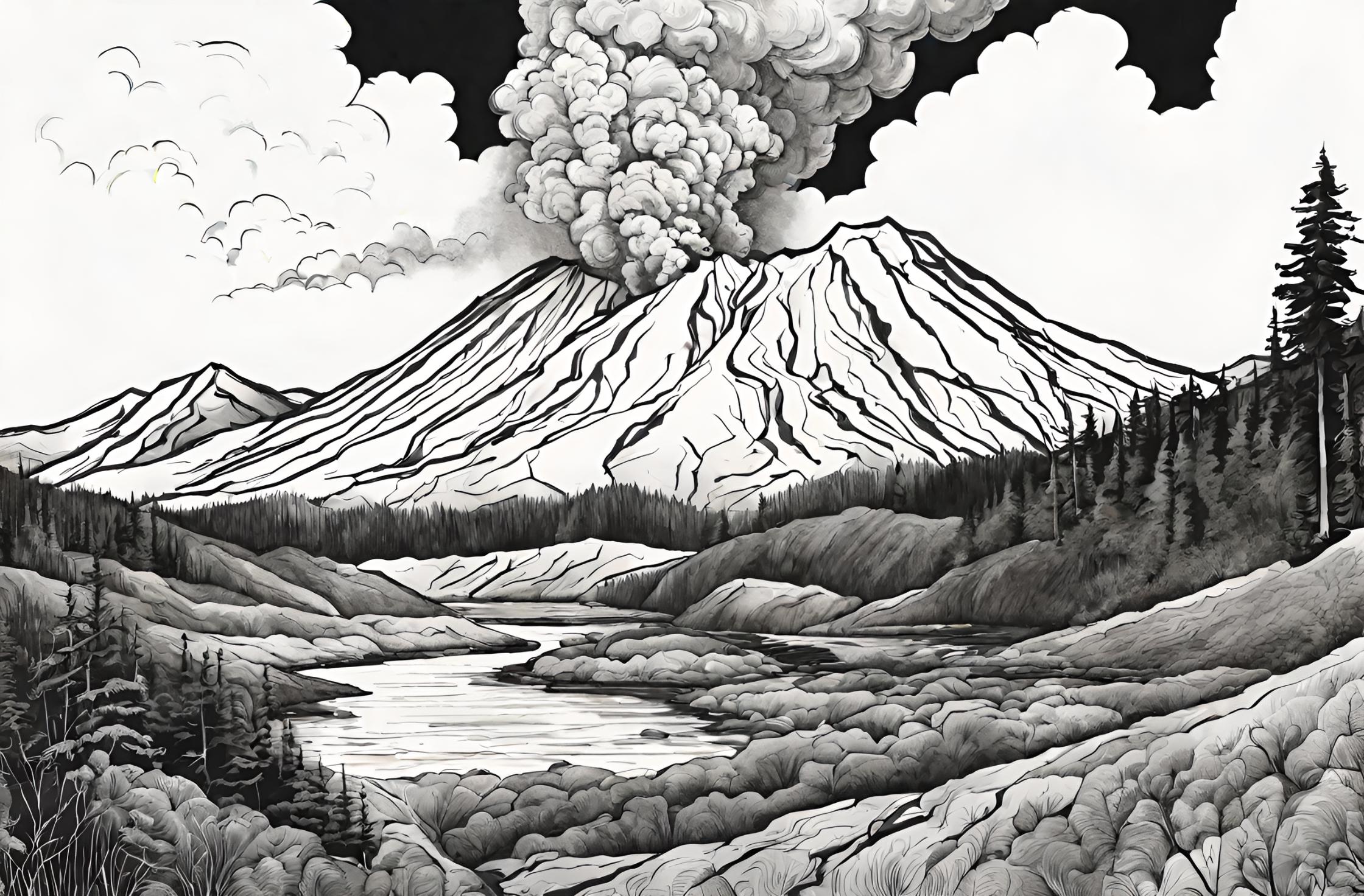Flashback to May 18
American History

1980
Mount Saint Helens erupts in Washington, killing 57 and causing $1.1 billion in damage
Read moreOn May 18, 1980, a catastrophic event unfolded in Washington state that would forever change the landscape of Mount Saint Helens and the lives of many. The eruption of this active volcano resulted in the tragic deaths of 57 people and caused an estimated $1.1 billion in damages, equivalent to about $3 billion today. The eruption was so powerful that 396 meters (1,300 feet) of the top of the mountain exploded, sending a gigantic dust cloud into the sky. This article will delve into the details of the Mount Saint Helens eruption, its impact on the surrounding area, and its lasting consequences.
The eruption of Mount Saint Helens was preceded by a series of seismic activities that began in early March 1980. These signs of volcanic activity prompted authorities to establish an exclusion zone around the mountain, evacuating thousands of residents and closing several highways in the area. However, on that fateful day in May, the volcano released an explosion that exceeded all expectations.
The eruption started with an earthquake measuring 5.1 on the Richter scale, causing the north face of the mountain to collapse. This triggered a colossal landslide, which was quickly followed by a massive lateral blast. The blast traveled at incredible speeds, reaching approximately 670 miles per hour (1,080 kilometers per hour) and expanding in a radius of 19 kilometers. The force of the blast blew down trees, destroyed buildings, and caused unimaginable destruction in its path.
The lateral blast, devastating as it was, was only the beginning. The explosion of Mount Saint Helens resulted in the release of a massive ash cloud that soared into the atmosphere, reaching a height of 80,000 feet (24,000 meters). The ash cloud was carried by prevailing winds across several states, including Washington, Oregon, Idaho, and even parts of Montana. This led to significant air traffic disruptions, with airports forced to shut down and airlines suspending flights in the affected regions.
The ash fall caused by the eruption was also a major concern. The areas near the volcano were covered in thick layers of ash, which posed numerous hazards to both humans and wildlife. The ash, composed of pulverized rock and glass particles, can be highly abrasive, causing health issues such as respiratory problems and eye irritation. Additionally, the weight of the ash caused structural damage to buildings and infrastructure. The accumulated ash also had severe consequences for agriculture, smothering crops and contaminating water supplies.
In terms of human casualties, the Mount Saint Helens eruption claimed the lives of 57 people, including geologists, loggers, campers, and sightseers. The victims were caught off guard by the sheer magnitude of the eruption and the destructive power of the lateral blast. The tragedy served as a reminder of the unpredictable nature of volcanic activity and the importance of preparedness and early warning systems.
The economic impact of the eruption was also significant. The estimated cost of damages amounted to a staggering $1.1 billion (approximately $3 billion today), making it one of the costliest volcanic eruptions in U.S. history. The destruction of forests, highways, bridges, and other infrastructure took years to rebuild. The local economy, heavily reliant on timber and tourism, suffered a severe blow, with long-term consequences for the communities in the area.
Decades after the eruption, the scars left by Mount Saint Helens remain visible. However, there have also been valuable lessons learned from this tragic event. The eruption prompted significant advancements in volcano monitoring and forecasting, leading to improved early warning systems and preparedness measures. It served as a reminder of the potential dangers posed by active volcanoes and the importance of understanding their behavior to mitigate risks.
The eruption of Mount Saint Helens on May 18, 1980, forever changed the lives of many and left a lasting impact on the surrounding area. The tragic loss of life and extensive damages serve as a reminder of the unrelenting power of nature. Today, Mount Saint Helens stands as a poignant reminder of the need for ongoing research and preparedness to protect communities living near active volcanoes.
We strive for accuracy. If you see something that doesn't look right, click here to contact us!
Sponsored Content

Mount Saint Helens erupts…
On May 18, 1980,…

Tennessee Valley Act (TVA)…
On May 18, 1933,…

Evangelist Aimee Semple McPherson…
On May 18, 1926,…

